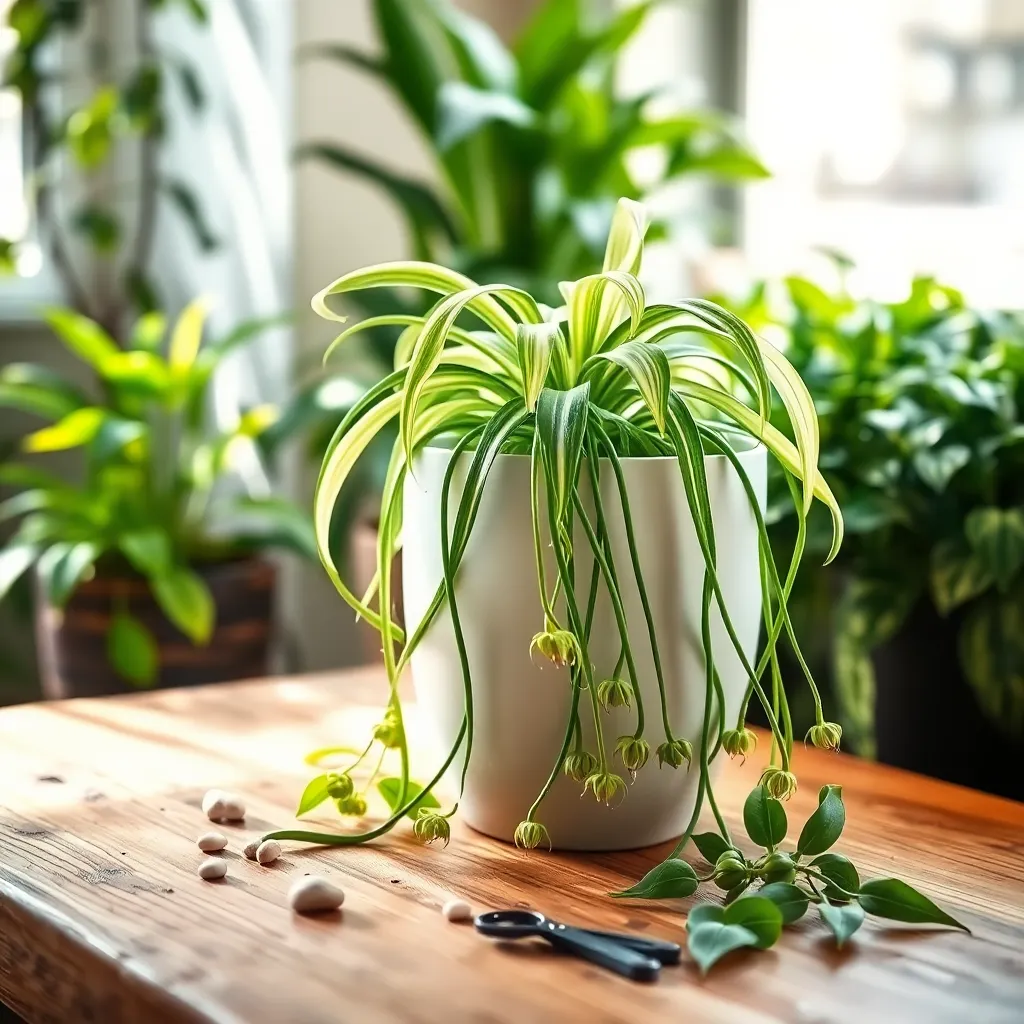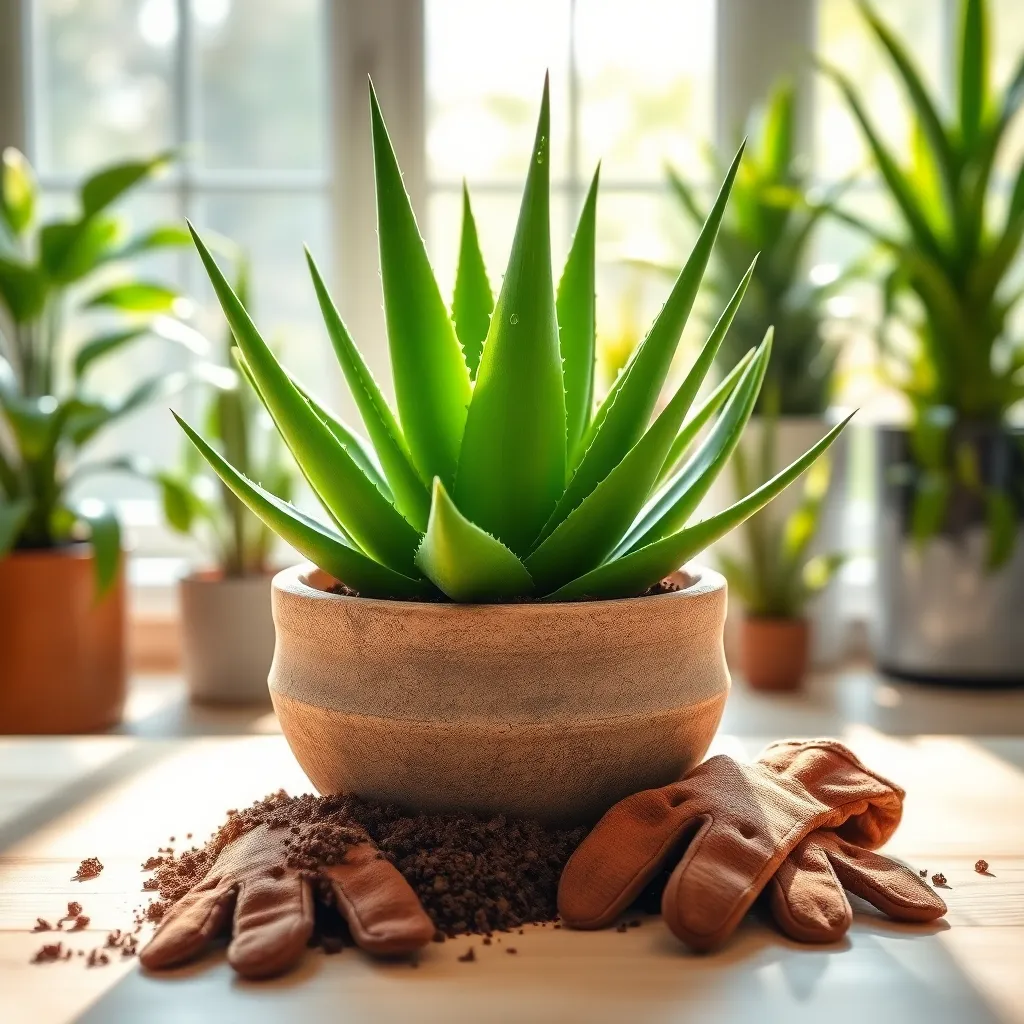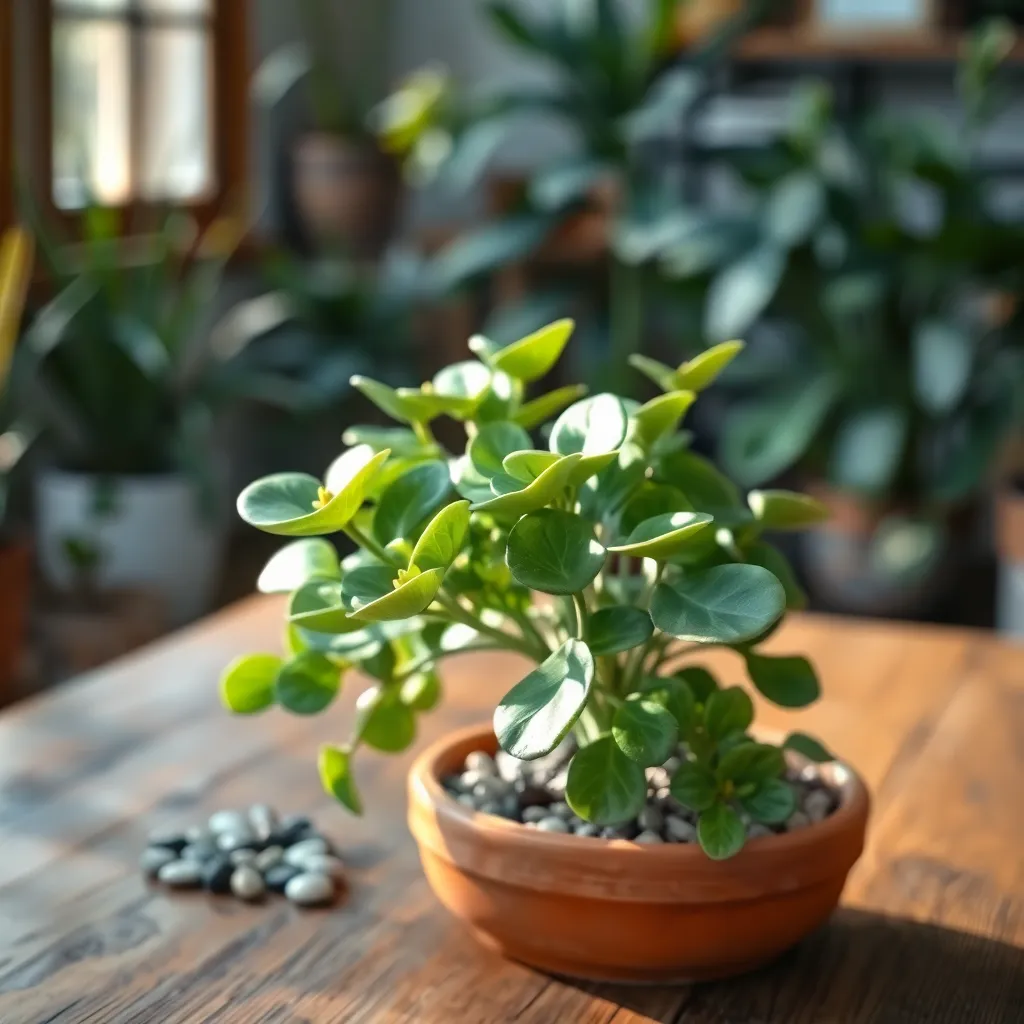Welcome to the verdant world of indoor gardening, where both budding enthusiasts and seasoned green thumbs can find joy and tranquility right within their homes. “Best Indoor Plants for Beginners” is your gateway to discovering easy-to-care-for plants that not only beautify your space but also boost your confidence as a gardener.
This guide is a treasure trove of tried-and-true plant selections that thrive with minimal fuss, making them perfect for those just starting out and a delight for experienced caretakers seeking low-maintenance additions. By embracing these plants, you’ll enjoy the countless benefits of indoor gardening, from improved air quality to a serene atmosphere, all while honing your horticultural skills.
With each plant, you’ll uncover practical tips and techniques to ensure their success, empowering you to cultivate a lush, indoor oasis. Dive in with enthusiasm, knowing that the path to a flourishing indoor garden is well within your reach.
Spider Plant (Chlorophytum comosum)

The Spider Plant, scientifically known as Chlorophytum comosum, is a top choice for beginner gardeners due to its resilience and easy care. It thrives in a variety of conditions, making it a forgiving plant if you’re just starting your indoor gardening journey.
To ensure your Spider Plant remains healthy, place it in a spot with indirect sunlight. Direct sunlight can scorch its leaves, so a bright, filtered light location is ideal.
Watering is simple—aim to keep the soil slightly moist, but be careful not to overwater. A good rule of thumb is to water when the top inch of soil feels dry to the touch.
Well-draining soil is crucial for Spider Plants to prevent root rot. Consider using a potting mix that includes perlite or sand to improve drainage.
For more advanced care, Spider Plants benefit from occasional feeding with a balanced liquid fertilizer during the growing season. This can enhance their growth and help produce those charming offshoots, or “spiderettes,” which can be propagated to create new plants.
Peace Lily (Spathiphyllum spp.)

The Peace Lily (Spathiphyllum spp.) is an excellent choice for those new to gardening, known for its elegant white blooms and lush green leaves. These plants are incredibly forgiving and can thrive even with minimal attention, making them perfect for beginners.
To keep your Peace Lily healthy, place it in a spot with bright, indirect light. Direct sunlight can scorch its leaves, so it is best to avoid windowsills that receive harsh afternoon sun.
Watering is crucial, but fortunately, Peace Lilies will tell you when they are thirsty by drooping their leaves. Aim to water them once the top inch of soil feels dry, and ensure that the pot has drainage holes to prevent root rot.
For those looking to elevate their care routine, consider misting the leaves regularly to increase humidity, which mimics their natural tropical environment. Additionally, feeding your Peace Lily with a balanced liquid fertilizer every six to eight weeks during the growing season will promote vibrant growth.
Aloe Vera (Aloe barbadensis miller)

Aloe Vera, known for its healing properties, is an excellent choice for beginner indoor gardeners. This hardy plant thrives with minimal care, making it perfect for those new to houseplants.
To keep your Aloe Vera healthy, ensure it receives bright, indirect sunlight. Placing it near a south or east-facing window will provide the ideal light conditions.
Water your Aloe Vera sparingly, allowing the soil to dry out completely between waterings. Overwatering can lead to root rot, so it’s crucial to use a well-draining potting mix, such as a cactus or succulent blend.
For those looking to encourage growth, consider fertilizing your Aloe Vera with a diluted houseplant fertilizer every spring. This will provide the nutrients needed for vibrant, robust foliage.
Jade Plant (Crassula ovata)

The Jade Plant, also known as Crassula ovata, is a popular choice for beginners due to its hardy nature and low maintenance requirements. With its thick, fleshy leaves and tree-like appearance, it adds a touch of elegance to any indoor space.
To thrive, Jade Plants require bright, indirect light, making them perfect for a sunny windowsill. It’s important to let the soil dry out completely between waterings to prevent root rot, which is a common issue with overwatered succulents.
When it comes to soil, choose a well-draining cactus or succulent mix to ensure proper aeration. You can create your own mix by combining regular potting soil with sand or perlite, enhancing drainage capabilities.
For those looking to encourage bushier growth, regularly prune your Jade Plant by pinching back the tips of new growth. This practice not only stimulates branching but can also help maintain a compact size, ideal for small indoor spaces.
Rubber Plant (Ficus elastica)

The Rubber Plant, or Ficus elastica, is a robust choice for beginners due to its adaptability and minimal care requirements. It flourishes in bright, indirect light but can also tolerate partial shade, making it a versatile addition to any indoor space.
For optimal growth, place your Rubber Plant in a well-draining potting mix, ideally one that is peat-based with perlite or sand for added drainage. Keep the soil consistently moist, but be cautious to avoid overwatering—allow the top inch of soil to dry out before watering again.
Humidity is beneficial for the Rubber Plant, so consider misting its leaves occasionally or placing it near a humidifier, especially in dry climates. If you notice the leaves gathering dust, gently wipe them with a damp cloth to maintain their glossy appearance and ensure they can photosynthesize efficiently.
As your Rubber Plant grows, it may require occasional pruning to maintain its shape and size. Use clean, sharp shears to trim any leggy or unwanted branches, and consider propagating the cuttings in water or potting mix to expand your indoor garden.
Conclusion: Growing Success with These Plants
As we explored the best indoor plants for beginners, we uncovered five key relationship concepts that these green companions can teach us. First, patience is paramount; just as plants need time to grow, nurturing relationships requires dedication and understanding. Second, communication is vital; observing your plant’s needs mirrors the importance of listening to loved ones. Third, adaptability is crucial; just as plants adjust to their environment, flexibility strengthens bonds. Fourth, consistency fosters growth; regular care parallels the commitment needed in relationships. Lastly, creating a nurturing environment ensures flourishing connections, much like providing the right conditions for plants.
To translate these insights into actionable steps, consider starting your plant journey today. Pick a beginner-friendly plant, such as a pothos or snake plant, and observe the lessons it imparts.
Remember, relationships thrive with mindful attention and effort. Bookmark this article to revisit these key principles and refresh your approach to nurturing connections. By investing in both your plant and relationship gardens, you’re stepping toward enduring relationship success. As you cultivate these practices, envision a future where both your plants and relationships flourish, bringing joy and fulfillment into your life.

